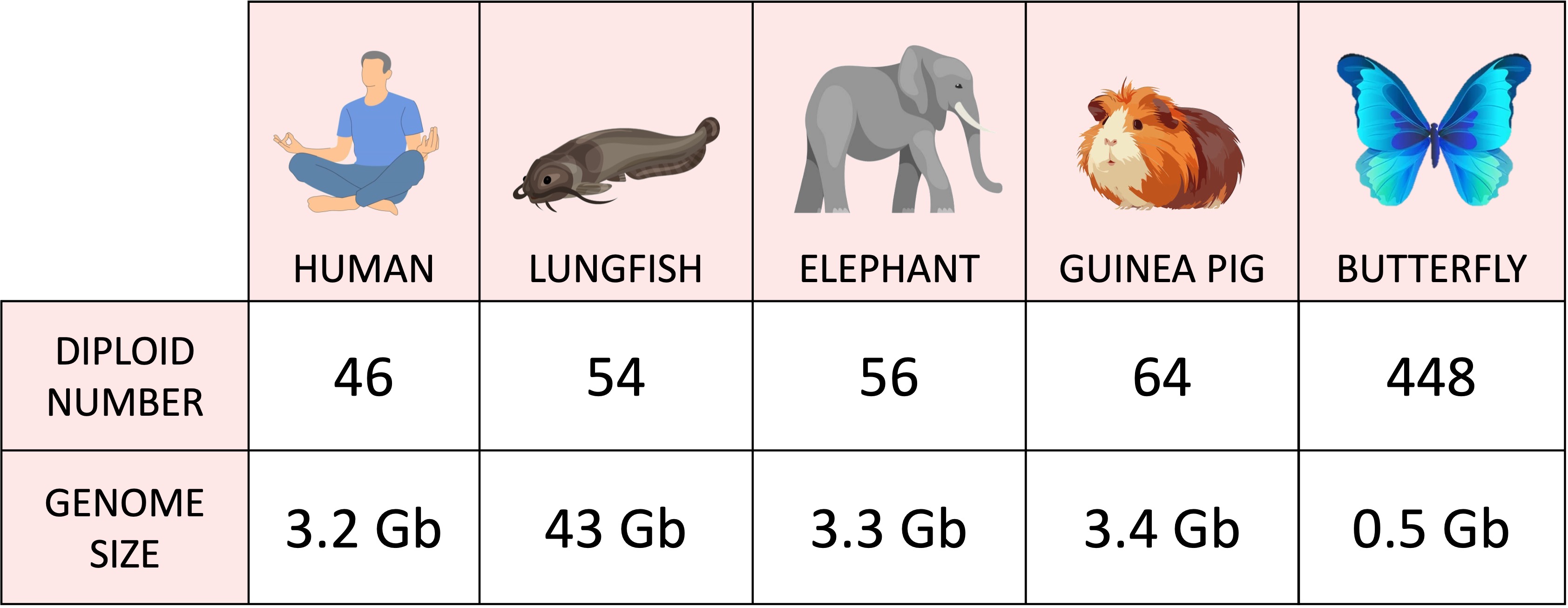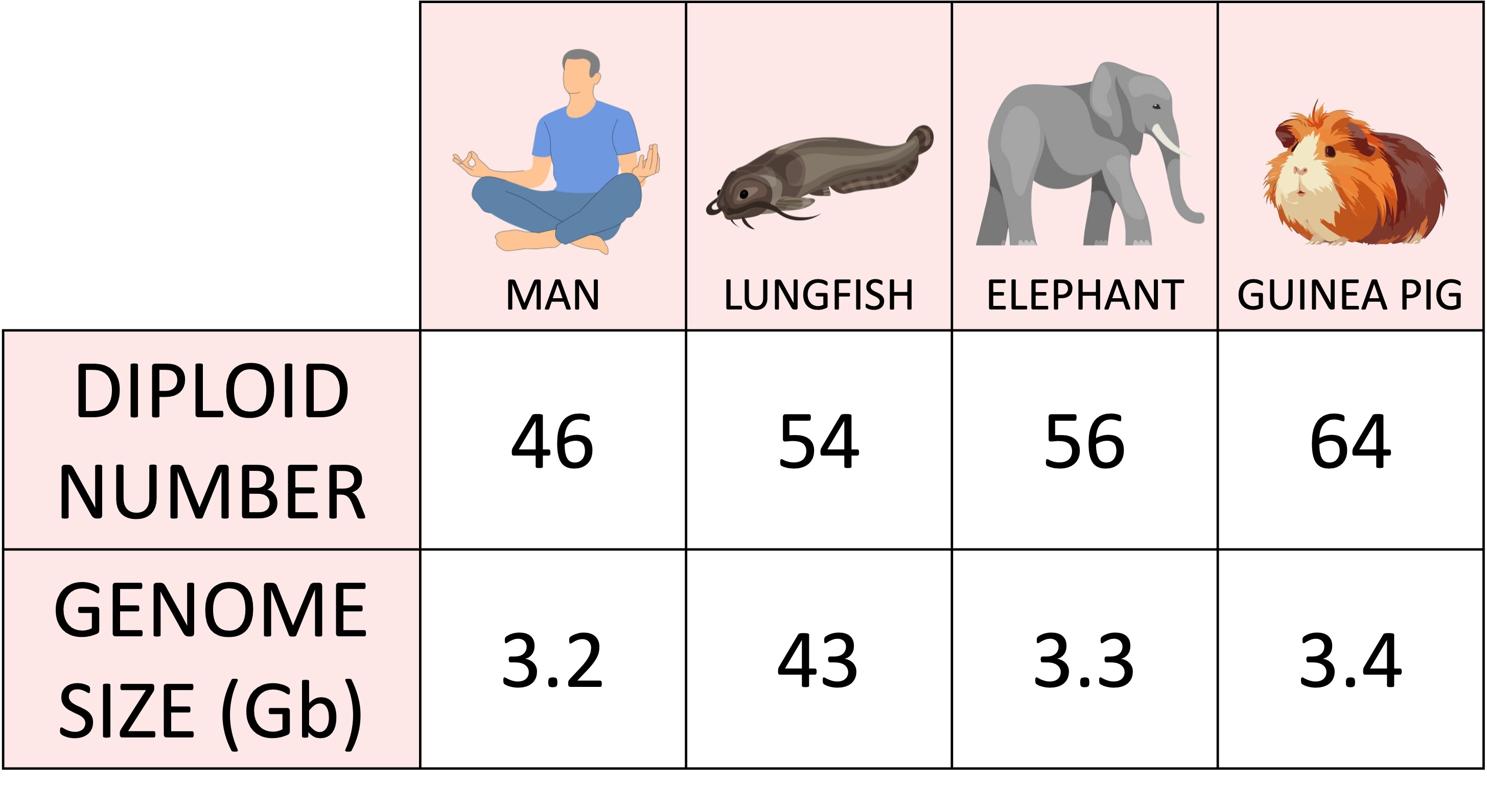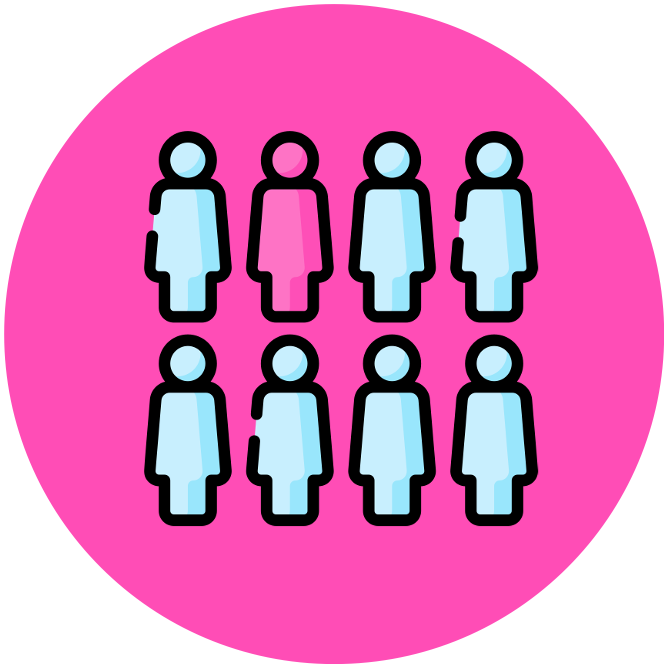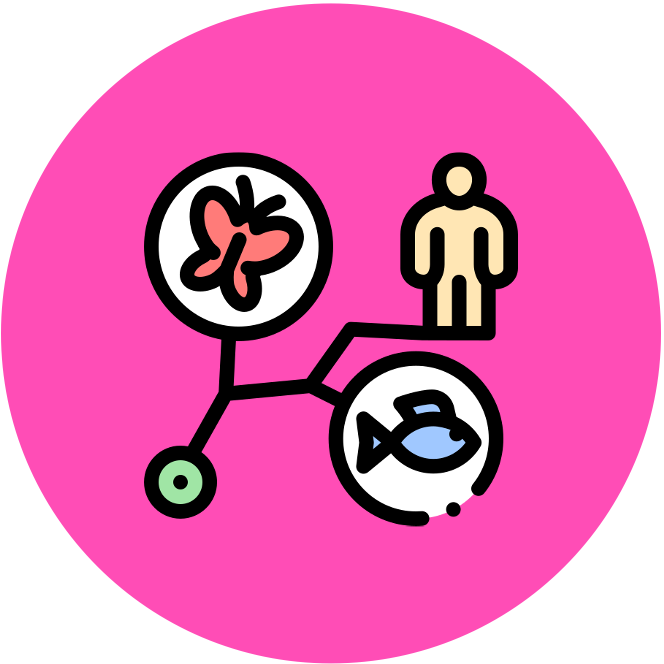

Genomic Diversity
Genome
The genome is the totality of genetic information present in every cell within an organism
-
This includes all genes as well as non-coding DNA sequences (introns, promoters, short tandem repeats, etc.)
-
It also includes all non-nuclear sequences – such as plasmid DNA (in prokaryotes) and organelle DNA (in eukaryotes)
Genomes vary in both size (total amount of DNA) and organisation (total number of chromosomes)
-
Genomes also vary in base sequence – with variation between species being much larger than variation within a species.
Organisms in the same species share most of their genome (same genes), but differences will exist within the base sequence (different alleles)
-
For example, all humans share approximately 99.9% of their genetic makeup, with the differences creating the variation seen in each individual
Genome Size
Genome size can vary greatly between organisms
-
Viruses and bacteria tend to have very small genomes, while most eukaryotic organisms have larger genomes
-
Sizes of plant genomes can vary dramatically due to the capacity for plant species to self-fertilise and become polyploid
Due to this significant diversity, genome size is not a valid indicator of genetic complexity
-
Small animals (guinea pigs) and large animals (elephants) can have similar genome sizes
-
Some animals can have a small genome size but large numbers of chromosomes (and vice versa)
-
One of the largest animal genomes belongs to the Australian lungfish (43 Gb), while the Japanese canopy plant has a genome size of 149 Gb
Genome Comparisons







